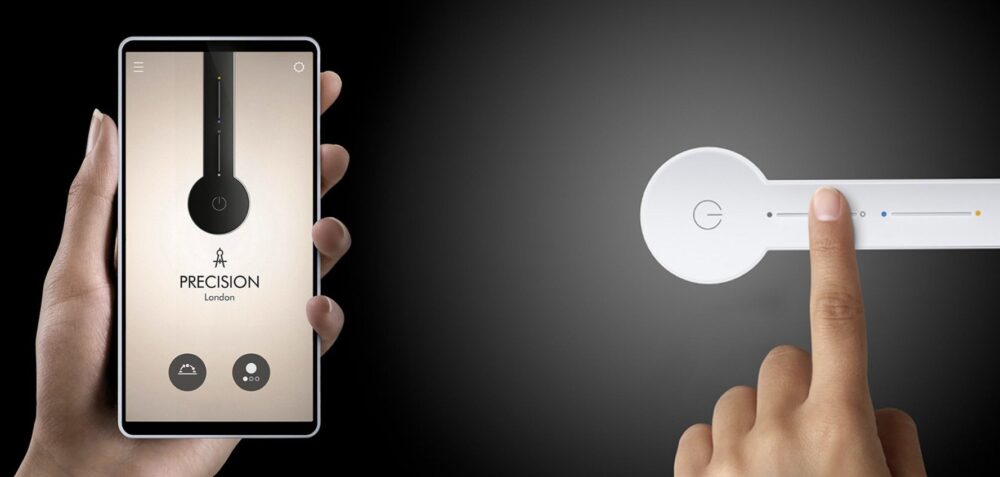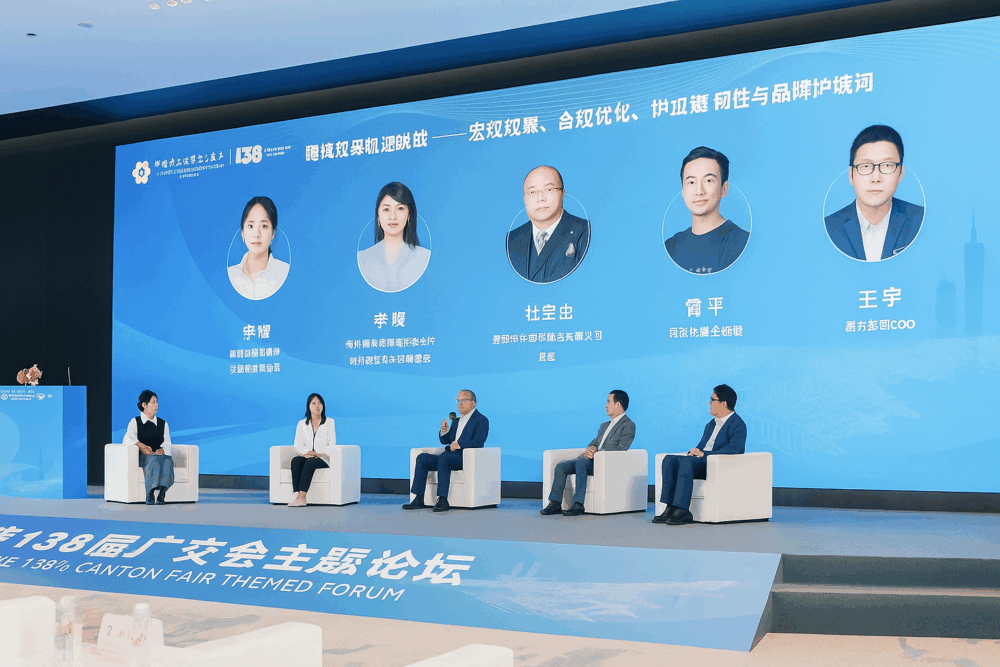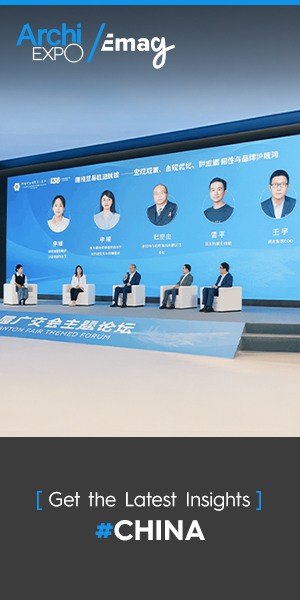Industry leaders announced a decade-long shift from platform-centric to brand-centric cross-border commerce, emphasizing content-driven marketing, local engagement, and independent brand ecosystems.
After five days of deal-making, debate, and digital showcases, one message resounded across the halls of the 2025 Canton Fair: the rules of cross-border commerce have changed. At Friday’s “Building Global Brands” conference, experts and entrepreneurs outlined a decisive shift from the platform-centric era—when sellers depended on Amazon, eBay, and Alibaba for reach—to a new, brand-centric ecosystem driven by content, creativity, and community.
Zhang Yaxue of MeetSocial Group called it “a decade-long correction” in global e-commerce strategy:
“The platform once owned the traffic, the customer, and the rules. Now brands must own their own audiences.”
Her remarks echoed the tone of this year’s Canton Fair, which drew more than 190,000 buyers from 200 countries and showcased China’s determination to move from Made in China to Created in China. The evolution of cross-border trade was a recurring theme throughout the week — from the logistics revolution unveiled by Yang Bochuan of Goblex Technology, who demonstrated how AI-driven forecasting and data standardization are streamlining global customs operations, to case studies of European buyers who shortened delivery cycles from seven days to three, saving €60,000 per shipment.
But while technology was a vital enabler, speakers stressed that brand agility and narrative control now define competitiveness. As another panelist from Hofan Group put it during Friday’s session on strategic flexibility:
“In a volatile world, the only real flexibility is knowing who you are as a brand — and adapting everything else around that.”
The Old Model vs. The New Model
A decade ago, cross-border commerce revolved around platforms. Sellers fought for ranking positions, discounts, and search visibility. The dominant logic was simple: the platform was the marketplace, and merchants were interchangeable. Quantity mattered more than story; visibility mattered more than identity.
That model, said Zhang Yaxue, has reached its limits. With advertising costs climbing, margins shrinking, and global consumers seeking trust over price, “brands can no longer outsource their identity to a platform.” In the old system, traffic belonged to Amazon or Alibaba; in the new one, it must belong to the brand.
The emerging model is brand-centric: companies own their customer relationships through independent websites, direct-to-consumer (DTC) channels, and localized storytelling. Instead of chasing fleeting platform trends, they invest in emotional engagement — creating distinctive identities, experiences, and content ecosystems.
“It’s not about where your product appears,” Zhang added, “it’s about what it stands for.”
This shift is perhaps best embodied by international design-led brands such as Dyson, Bang & Olufsen, and Muji, whose global reach stems as much from story and design language as from engineering. The new generation of Chinese exporters is learning from these examples, blending manufacturing scale with design-driven differentiation to build long-term equity rather than short-term volume.



Three Forces Driving the Change
According to Zhang, three converging forces are rewriting the playbook of cross-border commerce.
First, operational costs — from logistics to advertising — have risen sharply. The cost of customer acquisition on Facebook and Google has more than doubled in five years, eroding the profitability of traditional marketplace selling.
Second, mature regions such as Europe and North America are saturated. Platforms that once promised infinite growth now enforce stricter compliance and fee structures, compressing margins and limiting visibility for smaller sellers.
Third, and most transformative, is the change in consumer behavior. Today’s global consumers don’t simply “search and buy”; they discover, engage, and convert through stories, social proof, and shared values. Shopping is increasingly social — an act of identity expression as much as transactions.
To thrive under these conditions, Zhang outlined several strategic imperatives. Brands must develop multi-market, multi-channel layouts, tailoring strategy for each geography. Localisation must go beyond translation — from packaging to messaging, products must resonate culturally. Finally, content and commerce must be inseparable: marketing is no longer an accessory to sales but the engine that drives it.
“We’re entering an attention economy,” she said. “You win not by selling the cheapest product, but by creating the most meaningful story.”


Image (right): The Bang & Olufsen brand was analysed to define its design language. These criteria were then applied to a lamp design. It shows how far brand awareness can go. Courtesy of Christina Chan.
TikTok’s Global Role and the Shanghai LED Case Study
Nowhere is this “content-plus-commerce” model clearer than on TikTok, which has rapidly become the emotional bridge between brands and global consumers. In Southeast Asia, its e-commerce penetration now surpasses 30%, integrating storytelling, live-streaming, and one-click purchasing into a single loop of discovery and conversion.
A vivid example came from Shanghai: a 30-year-old lighting manufacturer, once a traditional B2B supplier, partnered with MeetSocial to launch its own direct-to-consumer brand on TikTok. Its breakthrough product — a sleek plant-growth LED lamp — was positioned not as a utility but as a lifestyle accessory for urban plant lovers. Collaborations with interior designers and tech influencers in Europe and the U.S. turned the product into a viral hit, transforming a once-anonymous factory supplier into a recognizable international brand.
This case, Zhang noted, underscores the power of narrative and design in global trade. By controlling both its creative direction and its supply chain, the company shifted from competing on price to competing on meaning — precisely the transformation the Canton Fair’s “Building Global Brands” session sought to highlight.

Strategic Flexibility: Loving Competition
If Zhang’s remarks framed the new rules of branding, Hofan Group’s Wang Yu provided a philosophy for survival in an unpredictable world: “love competition.” In his view, the turbulence of global supply chains — from tariffs to shipping routes — has made adaptability a strategic virtue.
“Flexibility,” he argued, “isn’t just smaller order quantities or faster production cycles; it begins with how quickly you understand your consumers and redesign your offer around them.”
For China’s design and manufacturing community, this mindset marks a cultural shift. Flexibility now means agile design, modular production, and real-time market sensing. It requires companies to align their creative, operational, and marketing systems around a single data loop — allowing them to respond instantly to market feedback.
This approach mirrors the strategies of world-renowned product design leaders such as Apple, IKEA, and Sony, whose success depends not only on innovation but on their ability to interpret shifting consumer needs and deliver consistent brand narratives across continents.
Wang Yu’s central message — that brand identity is the foundation of agility — tied neatly back to Zhang’s argument: when a company owns its brand story, it can pivot without losing coherence. In a crowded global marketplace, clarity becomes resilience.
Think Globally, Act Locally
As the 2025 Canton Fair concludes, the narrative emerging from its conference halls is unmistakable: the golden age of anonymous platform selling is ending. The future belongs to brands that think globally, act locally, and tell stories that travel.
Technology — from AI-driven logistics to data-backed consumer insight — remains the silent infrastructure of this new ecosystem. Yet the differentiator, as Friday’s speakers made clear, is human: creativity, adaptability, and authenticity. China’s next generation of exporters are no longer asking how to sell more products abroad — they are asking how to build global brands that endure. The rules have changed, and this time, the change favors those ready to write their own.











